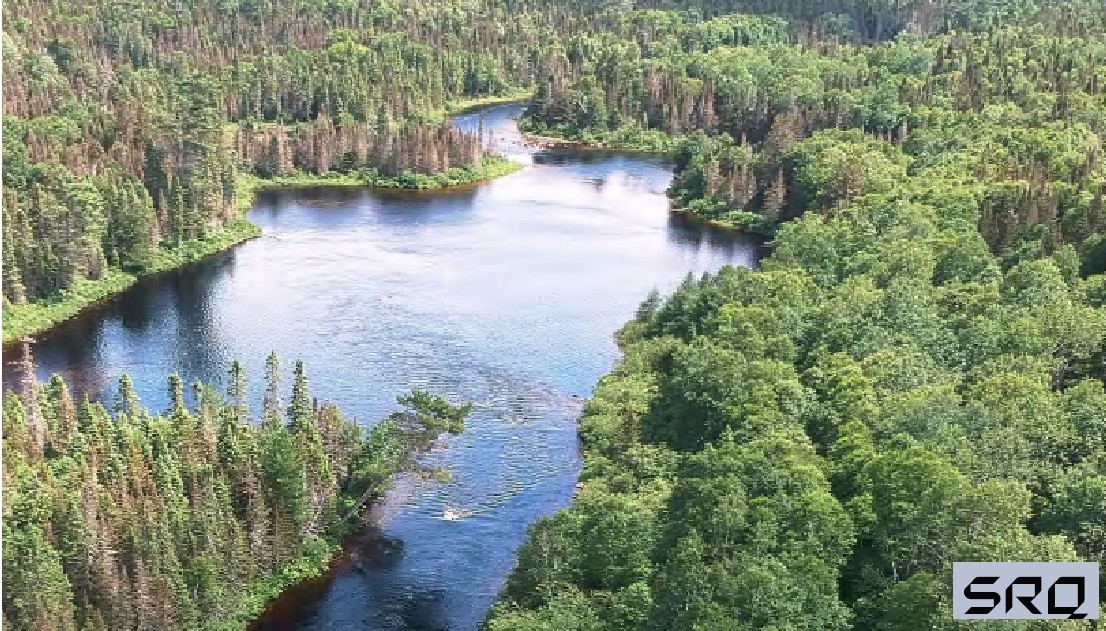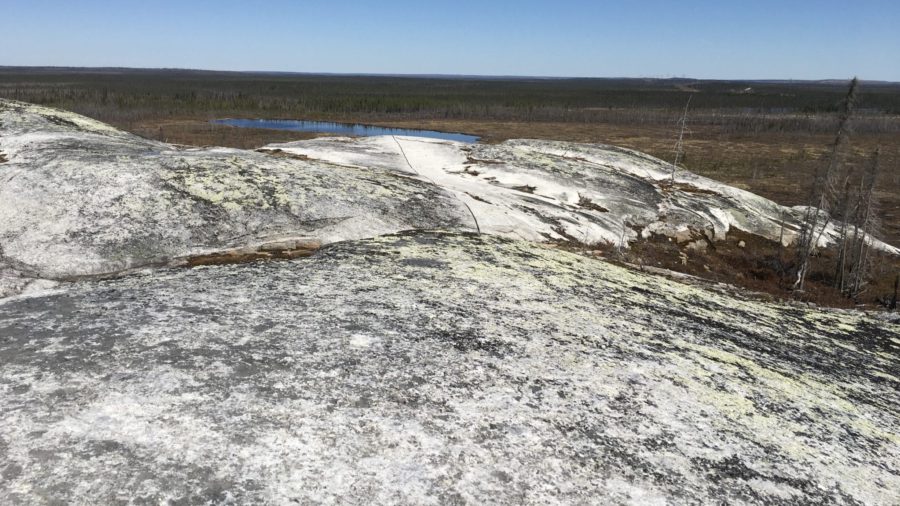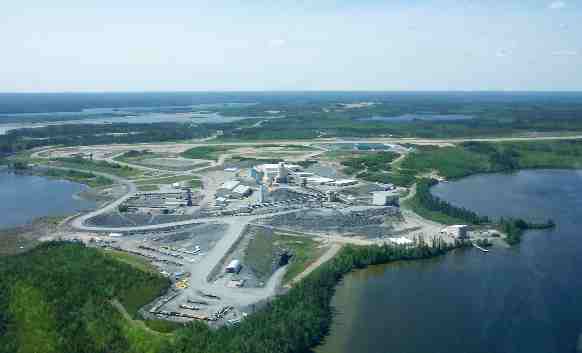Alexco advances Keno Hill

Alexco Resource’s Keno Hill project. CREDIT: ALEXCO RESOURCE
Alexco Resource first put its Bellekeno mine, in the Yukon’s historic Keno Hill silver mining district, in production in 2011. But after nearly three years of operation, the company put Bellekeno and its Keno District mill into care and maintenance in late 2013. As single, low-tonnage mine with high operating and fixed costs, the operation was vulnerable when the silver price dropped dramatically from a peak of nearly US$48.50 per oz. in 2011 to around US$20 per oz. in 2013.
Since that time, however, Alexco has worked to prove up reserves and resources at several high-grade, narrow-vein deposits at Keno Hill, and in March, the company released a new prefeasibility study for the project that Alexco believes will be more robust and sustainable.
Brad Thrall, president of Alexco, says that the big difference between the company’s first operation at Keno Hill and the operation outlined in its new study is tonnage, as well as grade.
“When we started to put this district back into production in 2010 and ’11, it was on the back of a little mine called Bellekeno, and that mine was only capable of running 250 tonnes per day,” Thrall said in an interview with CMJ in August. “With this district, like a lot of small, narrow-vein operations, there are a lot of fixed costs – probably 75% of our costs are fixed. So whether you’re operating at 250 tonnes per day or 400 tonnes per day, it makes a huge difference.”
Alexco’s current prefeasibility involves four mines, with two feeding ore to the mill at almost all times. The reserves are also larger and the silver grades, higher. The new plan will see throughput rise from 400 t/d at the start to 550 t/d in year three and onwards.
The study forecasts average production of 4 million oz. silver in concentrate per year from Keno Hill over a mine life of eight years. With the existing infrastructure in place, including a 400-t/d mill and much of the underground development work already completed, the project’s preproduction capex is only $23.2 million.
As for the economics, the prefeasibility study projects an after-tax internal rate of return of 74.2% and a net present value of $101.3 million.
The other difference this time around is that the company has been able to amend its existing streaming arrangement with Wheaton Precious Metals to be more flexible at lower silver prices.
“Wheaton put up US$50 million back in 2008 to build this district out and they have been great partners,” Thrall explains. “We have since renegotiated that stream so it’s much more accommodating in today’s price environment than it was when we originally started.”
The prefeasibility study used a silver price of US$15.75 per oz., increasing to US$18.25 in year four and beyond. Allin- sustaining costs are projected at US$11.98 per oz. silver.
The project is also economic at lower silver prices, however. At US$15.46 per oz. silver (the spot price at the time of the study), the after-tax IRR would be $79.9 million and the NPV would be 57%.
Mining will be done by cut-and-fill predominantly, with longhole drift-and fill used in thicker sections of the deposit.
Total probable reserves at Keno Hill’s four deposits – Bellekeno, Lucky Queen, Bermingham, and Flame & Moth – are 1.2 million tonnes at a diluted grade of 804 g/t silver, 2.98% lead, 4.13% zinc and 0.34 g/t gold for 30.5 million contained oz. silver.
Just two of the deposits contribute the majority of the ore in the mine plan, with Flame & Moth representing 60% and Bermingham 30%.
In a recent conference call, the company noted that 90% of the ore in the plan was discovered in just the past five years. In January, Alexco’s vice-president of exploration, Al McOnie, district exploration manager Seymour Iles and senior geologist Jared Chipman were awarded the 2018 H.H. “Spud” Huestis Award for Excellence in Prospecting and Mineral Exploration from the Association for Mineral Exploration (AME BC). The team was recognized for their work on the discovery and delineation of more than 60 million oz. of silver in the Flame & Moth and Bermingham deposits.
‘Right-sized’
Keno Hill is located in central Yukon, about 350 km north of Whitehorse in the traditional territory of the First Nation of Na-Cho Nyak Dun. Only about 40 km northeast of Mayo, the site enjoys year-round road and highway access and is connected to the power grid.
Thrall describes the prefeasibility as “right-sized” for Alexco, with a focus on reducing the upfront capital and having the highest NSR (net smelter return) tonnes at the front end of the mine plan. He adds that the plan only includes about 30% of the resource at Bermingham, illustrating the opportunity for an extended mine life.
Indicated resources at Keno Hill (inclusive of reserves) come to 3.9 million tonnes grading 594 g/t silver, 2% lead, 5.3% zinc and 0.34 g/t gold for 74 million contained oz. silver. Inferred resources add another 24 million oz. silver in 1.7 million tonnes grading 455 g/t silver, 1.6% lead, 3.7% zinc and 0.2 g/t gold.
As the project is a brownfields project with a low capex, the company will proceed based on the prefeasibility. Thrall says much of the work in the study is already feasibility level, including tight drill spacing of 10-12 metres for the first two years of mining on the Bermingham deposit.
And with a modest capital requirement, a healthy balance sheet, an undrawn debt facility with Sprott for US$15 million and a recent equity financing of US$6.5 million, plus earnings from the company’s environmental business (Alexco Environmental Group or AEG), Thrall doesn’t anticipate the need for significantly more financing other than potential lease agreements with OEMs and a potential offtake agreement for concentrate.
“Our concentrate will be somewhere in the range of 55-60% lead with over 15,000 grams of silver within that concentrate. We aren’t aware of another product like that in the world,” Thrall says, noting that only Pan American Silver’s now suspended Escobal mine, in Guatemala, produced anything similar.
“We’ve had a lot of interest from off-takers to get their hands on that type of a product because of the amount of silver in the concentrate.”
About 75% of the revenue from Keno Hill will be from silver.
While all the pieces are coming into place at Keno Hill, Alexco is still waiting on an amended water licence before it makes a production decision, now expected in the fourth quarter.
The company says it should achieve cash flow within four to six months of its production decision.
While Alexco awaits the water licence, it’s derisking the project by completing surface work that includes a new water treatment pond, a coarse ore storage pad, and the portal at Bermingham, all of which will be done in the early fall.

Inside the processing plant, which was built in 2010. CREDIT: ALEXCO RESOURCE
A second phase of work, which will consist of resuming underground development plus mill commissioning, will start when the timing of the water licence is clearer.
“We completed 1,000 metres of development already in the last one and half years at both Flame & Moth and Bermingham – so all the underground infrastructure is in place,” Thrall says.
“We’ve gone as far as we need to right now so Phase 2 would be continuing the development to reach the ore, and really pulling the trigger in terms of advancing underground development.”
At Bermingham, workings have advanced to within 90 metres of ore.
Historic silver district
Keno Hill has a long mining history, generating more than 200 million oz. of high grade silver (44 oz./t) between 1913 and 1989.
“It’s really truly one of the more prolific and highest-grade silver districts in the world,” Thrall notes.
Historic mining left behind dangerous mine adits and shafts that need to be filled and tailings impoundments that need to be cleaned up. In 2005, the federal government, which had taken over care and maintenance and environmental liabilities, decided there was still opportunity in the district and auctioned it off. Alexco, which also has an environmental services arm (AEG), put in the winning bid. That bid gave it both the mineral rights and the responsibility for environmental remediation in the district.
“Our business model is not only mine exploration, development and operations, we also had and still have expertise in environmental management, environmental consulting and remediation – so we brought those two skill sets together,” Thrall explains.
“We recognized that part of what comes with Keno Hill is the responsibility to clean this district up. We have a contract with Canada to do that – they are paying the cost to do that, but we also share in some of those costs, we posted $10 million essentially to buy this district – that money’s in a trust fund that eventually goes to the cleanup.”
The $100-million cleanup plan for the district’s 50-plus individual mine sites has been approved by the federal government and is now going through the environmental approval process in the Yukon under the Yukon Environmental and Socio-economic Assessment Board (YESAB). That is expected to be complete within the next couple of months, and then Alexco can apply for an amended water licence, which would likely be granted in 2020. The company anticipates the real work – building new water treatment plants and cleaning up historic mine sites and tailings impoundments – will start in 2021, well after the Keno Hill mine is up and running. Active reclamation work is expected to last five years.
At presstime, the federal government announced funding for the Keno Hill site (and seven other abandoned in the territories) through the new Northern Abandoned Mine Reclamation program.
Notably, Alexco’s original Bellekeno mine as well as its plans for its expanded operations involve dry-stack tailings disposal instead of tailings ponds. Thrall says given the district’s history, the topography and the size of the operation, the company made a conscious decision to go low-impact on the environment from the beginning.
“That definitely helped with permitting and really, the social licence as well,” he says.
Yukon
While there has been some delay with the water permit at Keno Hill, Thrall says Alexco is comfortable with the regulatory process in the Yukon, although there are opportunities to improve permitting timelines.
“Right now, we’re estimating a water licence in the fourth quarter, which has been delayed, but at the end of the day it still will coincide with our ultimate production decision,” he says.
The company will have to go through the permitting process again to amend its quartz mining licence in order to operate at 550 t/d starting in year three, as outlined in the prefeasibility.
“That’s part of the reason we’re giving ourselves plenty of time on the front end in terms of our restart – a couple of years operating at 400 tonnes per day – in order to re-permit that mill for higher throughput.”
Thrall says the company doesn’t foresee needing another amendment to the water licence.
Ultimately, he says the Yukon is a “great place to be” – both in terms of geology and the regulatory environment.
“We certainly support the process there and we know it well. I think we have a good relationship with the bureaucracy and regulators and the political level to collectively improve the system.”





Comments